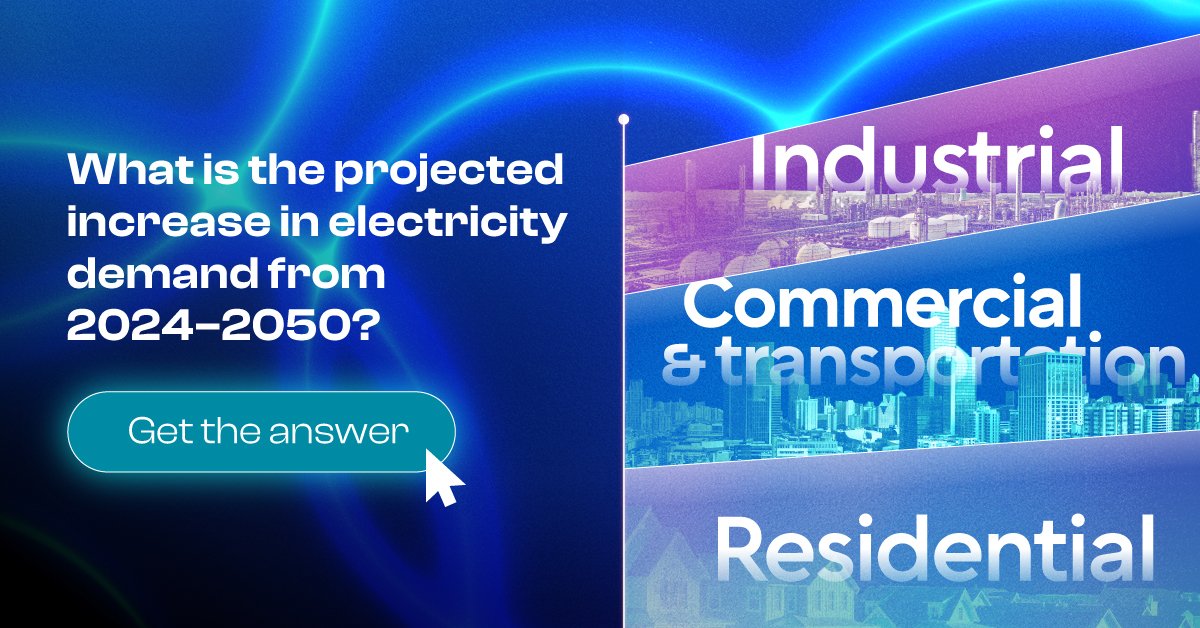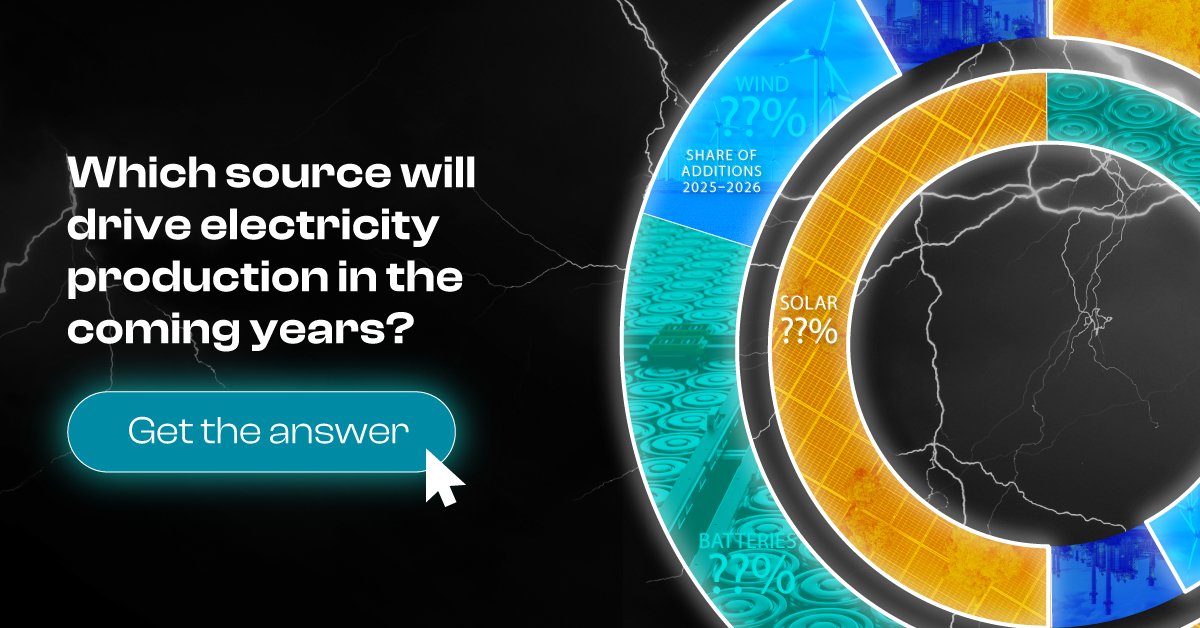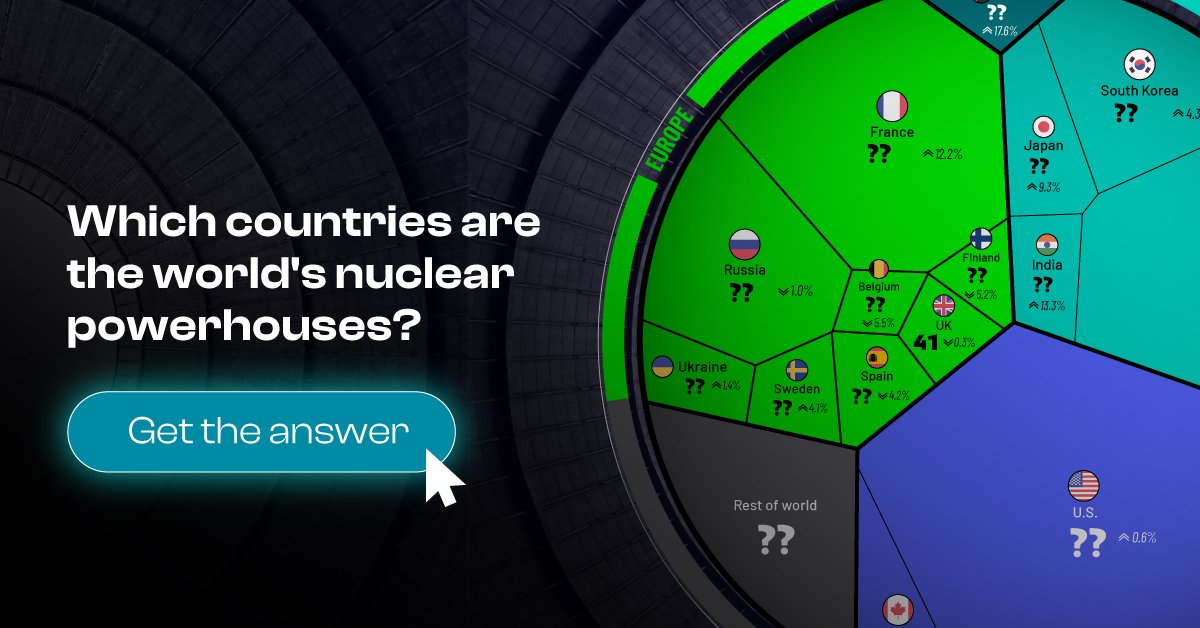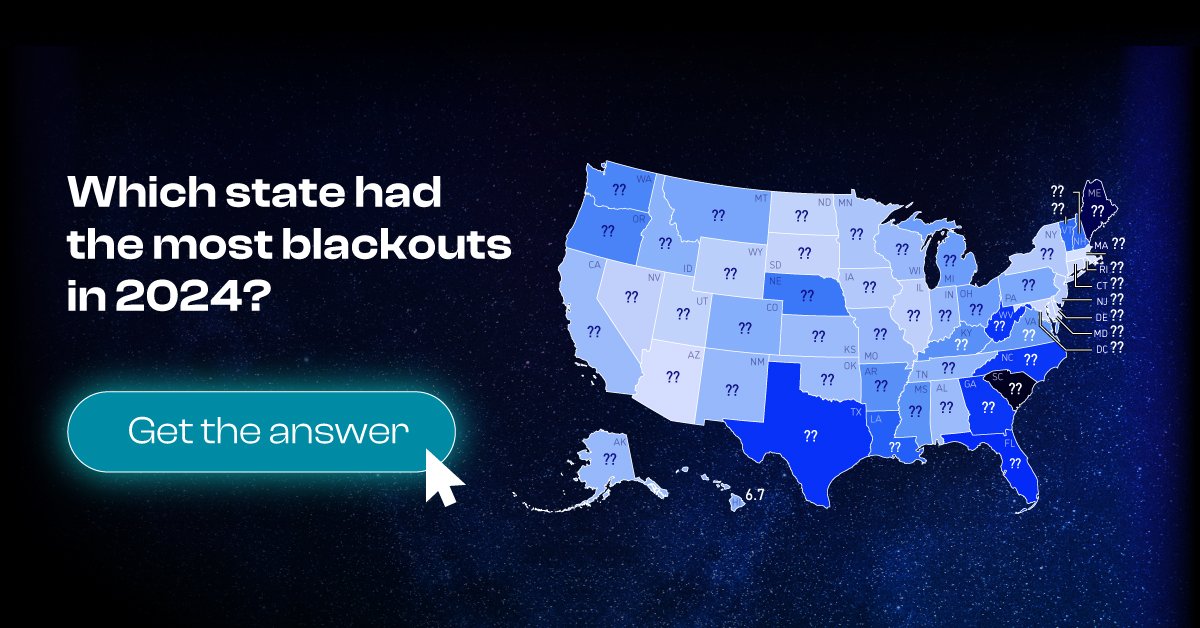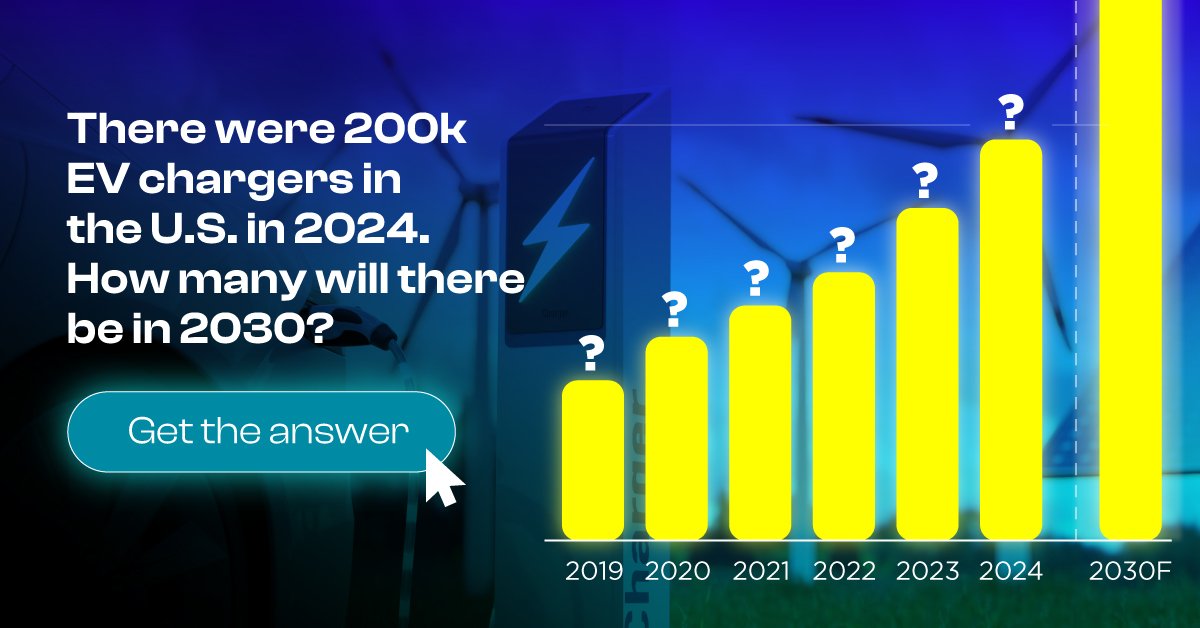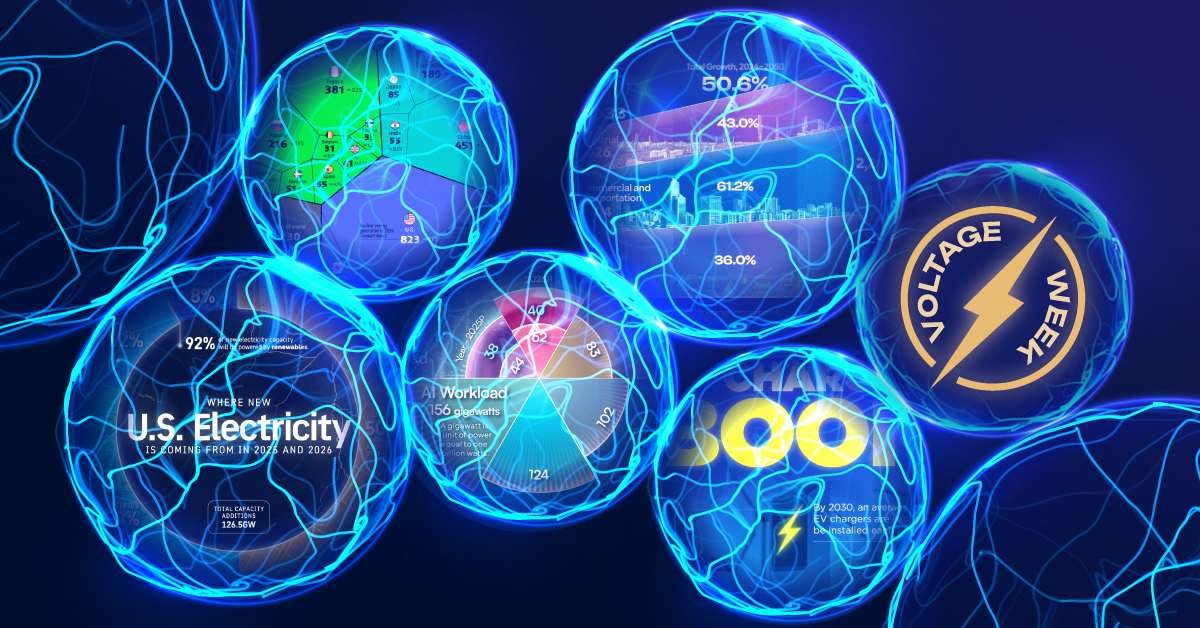
Electricity demand is entering a transformative era. From AI-driven power-hungry data centers to the rapid rollout of EV chargers, the U.S. and the world are reimagining their electricity needs.
For VOLTage Week, we partnered with Tema ETFs to explore compelling tailwinds shaping the future of electrification. From the surging role of nuclear power to the vulnerabilities of America’s power grid, the series revealed just how profound the changes ahead will be.
Below, we’ve compiled the key takeaways, showing how data and innovation will shape the next energy revolution.
1. U.S. Electricity Demand Through 2050
Electricity demand is set to surge across industrial, commercial, transportation, and residential segments—fueled by the rapid growth of AI, electric vehicles, and renewable energy. Which sources are driving this trend?
2. AI’s Heavy Electricity Footprint
Artificial Intelligence is booming—and so is its appetite for electricity. McKinsey data shows that AI-driven data centers will be among the largest contributors to electricity demand growth in the years ahead. As adoption accelerates, utilities and policymakers will face mounting challenges in meeting this load sustainably.
 Explore AI’s growing footprint
Explore AI’s growing footprint
3. What’s Powering New U.S. Electricity Generation?
Renewables are leading the charge. Between 2025 and 2026, solar will account for half of new U.S. electricity additions, while natural gas makes up just 8%. With solar costs continuing to fall, the energy mix is evolving faster than ever toward low-carbon sources.
 Explore the new energy generation mix
Explore the new energy generation mix
4. Nuclear Power’s Global Role
Nuclear power remains a backbone of global energy security. The U.S. leads with nearly 30% of total generation, followed by China and France. Globally, nuclear contributes about 10% of electricity supply—an essential role as nations pursue both reliability and decarbonization.
 See the global nuclear rankings
See the global nuclear rankings
5. Hours Without Power: The Grid’s Strain
In 2024, customers across the U.S. faced increasingly frequent outages, with stark differences by state. These disruptions highlight the widening cracks in America’s aging grid—and the urgent need for modernization.
6. EV Charging Infrastructure
The U.S. charging network has grown more than 12-fold since 2013, reaching nearly 200,000 chargers in 2024. By 2030, that number is expected to skyrocket. This rapid scale-up is central to enabling mass EV adoption—but also adds new layers of strain to the grid.
Looking Ahead: Building the Future Grid
Electrification is no longer a distant horizon—it’s happening now. The challenge is balancing soaring demand with clean, reliable supply. From AI to EVs to renewables, tomorrow’s energy system will require unprecedented investment, innovation, and resilience–spanning everything from energy generation to grid modernization and power management technologies.
The Tema Electrification ETF (VOLT) invests in the companies powering the future.


